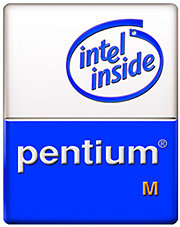|
Swiftfox
Swiftfox was a web browser based on Mozilla Firefox. It was available for Linux platforms and distributed by Jason Halme. Swiftfox was a set of builds of Firefox optimized for different Intel and AMD microprocessors. Swiftfox was freely downloadable with open source code and proprietary binaries. Firefox extensions and plugins were compatible with Swiftfox, with notable exceptions. The name Swiftfox comes from the animal swift fox. Swiftfox differs from Firefox by a limited number of changes, and builds for different processors. Swiftfox was discontinued at some point prior to April 2017, and the project homepage now redirects to the creator's private Twitter account. Optimization The Swiftfox build is optimized using the following methods: Binary code optimization *Compiled with the highest level of compiler optimization, rather than optimization for binary size. ** Swiftfox is compiled -O3,Using url of ''about:buildconfig'' to check the details of the 2.0 builds (the highe ... [...More Info...] [...Related Items...] OR: [Wikipedia] [Google] [Baidu] |
Linux
Linux ( or ) is a family of open-source Unix-like operating systems based on the Linux kernel, an operating system kernel first released on September 17, 1991, by Linus Torvalds. Linux is typically packaged as a Linux distribution, which includes the kernel and supporting system software and libraries, many of which are provided by the GNU Project. Many Linux distributions use the word "Linux" in their name, but the Free Software Foundation uses the name "GNU/Linux" to emphasize the importance of GNU software, causing some controversy. Popular Linux distributions include Debian, Fedora Linux, and Ubuntu, the latter of which itself consists of many different distributions and modifications, including Lubuntu and Xubuntu. Commercial distributions include Red Hat Enterprise Linux and SUSE Linux Enterprise. Desktop Linux distributions include a windowing system such as X11 or Wayland, and a desktop environment such as GNOME or KDE Plasma. Distributions intended for ... [...More Info...] [...Related Items...] OR: [Wikipedia] [Google] [Baidu] |
MMX (instruction Set)
MMX is a ''single instruction, multiple data'' ( SIMD) instruction set architecture designed by Intel, introduced on January 8, 1997 with its Pentium P5 (microarchitecture) based line of microprocessors, named "Pentium with MMX Technology". It developed out of a similar unit introduced on the Intel i860, and earlier the Intel i750 video pixel processor. MMX is a processor supplementary capability that is supported on IA-32 processors by Intel and other vendors . The New York Times described the initial push, including Super Bowl advertisements, as focused on "a new generation of glitzy multimedia products, including videophones and 3-D video games." MMX has subsequently been extended by several programs by Intel and others: 3DNow!, Streaming SIMD Extensions (SSE), and ongoing revisions of Advanced Vector Extensions (AVX). Overview Naming MMX is officially a meaningless initialism trademarked by Intel; unofficially, the initials have been variously explained as standin ... [...More Info...] [...Related Items...] OR: [Wikipedia] [Google] [Baidu] |
K6-2
The K6-2 is an x86 microprocessor introduced by AMD on May 28, 1998, and available in speeds ranging from 266 to 550 MHz. An enhancement of the original K6, the K6-2 introduced AMD's 3DNow! SIMD instruction set, featured a larger 64 KiB Level 1 cache (32 KiB instruction and 32 KiB data), and an upgraded system-bus interface called Super Socket 7, which was backward compatible with older Socket 7 motherboards. It was manufactured using a 0.25 micrometre process, ran at 2.2 volts, and had 9.3 million transistors. History The K6-2 was designed as a competitor to Intel's flagship processor, the significantly more expensive Pentium II. Performance of the two chips was similar: the previous K6 tended to be faster for general-purpose computing, while the Intel part was faster in x87 floating-point applications. To battle the Pentium 2's dominance on floating point calculations the K6-2 was the first CPU to introduce a floating point SIMD instruction set (dubbed 3DNo ... [...More Info...] [...Related Items...] OR: [Wikipedia] [Google] [Baidu] |
Athlon
Athlon is the brand name applied to a series of x86-compatible microprocessors designed and manufactured by Advanced Micro Devices (AMD). The original Athlon (now called Athlon Classic) was the first seventh-generation x86 processor and the first desktop processor to reach speeds of one gigahertz (GHz). It made its debut as AMD's high-end processor brand on June 23, 1999. Over the years AMD has used the Athlon name with the 64-bit Athlon 64 architecture, the Athlon II, and Accelerated Processing Unit (APU) chips targeting the Socket AM1 desktop SoC architecture, and Socket AM4 Zen microarchitecture. The modern Zen-based Athlon with a Radeon Graphics processor was introduced in 2019 as AMD's highest-performance entry-level processor. Athlon comes from the Ancient Greek (''athlon''), meaning "(sport) contest", or "prize of a contest", or "place of a contest; arena". With the Athlon name originally used for AMD's high-end processors, AMD currently uses Athlon for ... [...More Info...] [...Related Items...] OR: [Wikipedia] [Google] [Baidu] |
Athlon64
The Athlon 64 is a ninth-generation, AMD64-architecture microprocessor produced by Advanced Micro Devices (AMD), released on September 23, 2003. It is the third processor to bear the name ''Athlon'', and the immediate successor to the Athlon#Athlon XP/MP, Athlon XP. The second processor (after the Opteron) to implement the AMD64 architecture and the first 64-bit computing, 64-bit processor targeted at the average consumer, it was AMD's primary consumer CPU, and primarily competed with Intel's Pentium 4, especially the ''Prescott'' and ''Cedar Mill'' core revisions. It is AMD's first AMD K8, K8, eighth-generation processor core for desktop and mobile computers. Despite being natively 64-bit, the AMD64 architecture is backward-compatible with 32-bit computing, 32-bit x86 instructions. Athlon 64s have been produced for Socket 754, Socket 939, Socket 940, and Socket AM2. The line was succeeded by the dual-core Athlon 64 X2 and Athlon X2 lines. Background The Athlon 64 was originally c ... [...More Info...] [...Related Items...] OR: [Wikipedia] [Google] [Baidu] |
AMD64
x86-64 (also known as x64, x86_64, AMD64, and Intel 64) is a 64-bit version of the x86 instruction set, first released in 1999. It introduced two new modes of operation, 64-bit mode and compatibility mode, along with a new 4-level paging mode. With 64-bit mode and the new paging mode, it supports vastly larger amounts of virtual memory and physical memory than was possible on its 32-bit predecessors, allowing programs to store larger amounts of data in memory. x86-64 also expands general-purpose registers to 64-bit, and expands the number of them from 8 (some of which had limited or fixed functionality, e.g. for stack management) to 16 (fully general), and provides numerous other enhancements. Floating-point arithmetic is supported via mandatory SSE2-like instructions, and x87/ MMX style registers are generally not used (but still available even in 64-bit mode); instead, a set of 16 vector registers, 128 bits each, is used. (Each register can store one or two double-precisi ... [...More Info...] [...Related Items...] OR: [Wikipedia] [Google] [Baidu] |
Pentium II
The Pentium II brand refers to Intel's sixth-generation microarchitecture (" P6") and x86-compatible microprocessors introduced on May 7, 1997. Containing 7.5 million transistors (27.4 million in the case of the mobile Dixon with 256 KB L2 cache), the Pentium II featured an improved version of the first ''P6''-generation core of the Pentium Pro, which contained 5.5 million transistors. However, its L2 cache subsystem was a downgrade when compared to the Pentium Pros. It is a single-core microprocessor. In 1998, Intel stratified the Pentium II family by releasing the Pentium II-based Celeron line of processors for low-end workstations and the Pentium II Xeon line for servers and high-end workstations. The Celeron was characterized by a reduced or omitted (in some cases present but disabled) on-die full-speed L2 cache and a 66 MT/s FSB. The Xeon was characterized by a range of full-speed L2 cache (from 512 KB to 2048 KB), a 100 MT/s FSB, a different physi ... [...More Info...] [...Related Items...] OR: [Wikipedia] [Google] [Baidu] |
Pentium M
The Pentium M is a family of mobile 32-bit single-core x86 microprocessors (with the modified Intel P6 (microarchitecture), P6 microarchitecture) introduced in March 2003 and forming a part of the Intel Centrino#Carmel platform (2003), Carmel notebook platform under the then new Centrino brand. The ''Pentium M'' processors had a maximum thermal design power (TDP) of 5–27 W depending on the model, and were intended for use in laptops (thus the "M" suffix standing for ''mobile''). They evolved from the core of the last Pentium III–branded CPU by adding the front-side bus (FSB) interface of Pentium 4, an improved instruction decoding and issuing front end, improved branch predictor, branch prediction, SSE2 support, and a much larger cache. The first Pentium M–branded CPU, code-named Banias, was followed by Dothan. The Pentium M line was removed from the official price lists in July 2009, when the Pentium M-branded processors were succeeded by the Intel Core, Core-branded dual- ... [...More Info...] [...Related Items...] OR: [Wikipedia] [Google] [Baidu] |
Pentium III
The Pentium III (marketed as Intel Pentium III Processor, informally PIII or P3) brand refers to Intel's 32-bit x86 desktop and mobile CPUs based on the sixth-generation P6 microarchitecture introduced on February 28, 1999. The brand's initial processors were very similar to the earlier Pentium II-branded processors. The most notable differences were the addition of the Streaming SIMD Extensions (SSE) instruction set (to accelerate floating point and parallel calculations), and the introduction of a controversial serial number embedded in the chip during manufacturing. The Pentium III is also a single-core processor. Even after the release of the Pentium 4 in late 2000, the Pentium III continued to be produced with new models introduced until early 2003, and were discontinued in April 2004 for desktop units, and May 2007 for mobile units. Processor cores Similarly to the Pentium II it superseded, the Pentium III was also accompanied by the Celeron brand for lower-end vers ... [...More Info...] [...Related Items...] OR: [Wikipedia] [Google] [Baidu] |
Pentium 4
Pentium 4 is a series of single-core CPUs for desktops, laptops and entry-level servers manufactured by Intel. The processors were shipped from November 20, 2000 until August 8, 2008. The production of Netburst processors was active from 2000 until May 21, 2010. All Pentium 4 CPUs are based on the NetBurst microarchitecture. The Pentium 4 '' Willamette'' (180 nm) introduced SSE2, while the '' Prescott'' (90 nm) introduced SSE3. Later versions introduced Hyper-Threading Technology (HTT). The first Pentium 4-branded processor to implement 64-bit was the ''Prescott'' (90 nm) (February 2004), but this feature was not enabled. Intel subsequently began selling 64-bit Pentium 4s using the ''"E0" revision'' of the Prescotts, being sold on the OEM market as the Pentium 4, model F. The E0 revision also adds eXecute Disable (XD) (Intel's name for the NX bit) to Intel 64. Intel's official launch of Intel 64 (under the name EM64T at that time) in mainstream de ... [...More Info...] [...Related Items...] OR: [Wikipedia] [Google] [Baidu] |
3DNow!
3DNow! is a deprecated extension to the x86 instruction set developed by Advanced Micro Devices (AMD). It adds single instruction multiple data (SIMD) instructions to the base x86 instruction set, enabling it to perform vector processing of floating-point vector-operations using Vector registers, which improves the performance of many graphic-intensive applications. The first microprocessor to implement 3DNow was the AMD K6-2, which was introduced in 1998. When the application was appropriate, this raised the speed by about 2–4 times. However, the instruction set never gained much popularity, and AMD announced on August 2010 that support for 3DNow would be dropped in future AMD processors, except for two instructions (the PREFETCH and PREFETCHW instructions). The two instructions are also available in Bay-Trail Intel processors. History 3DNow was developed at a time when 3D graphics were becoming mainstream in PC multimedia and games. Realtime display of 3D graphics depen ... [...More Info...] [...Related Items...] OR: [Wikipedia] [Google] [Baidu] |
.jpg)

.jpg)




